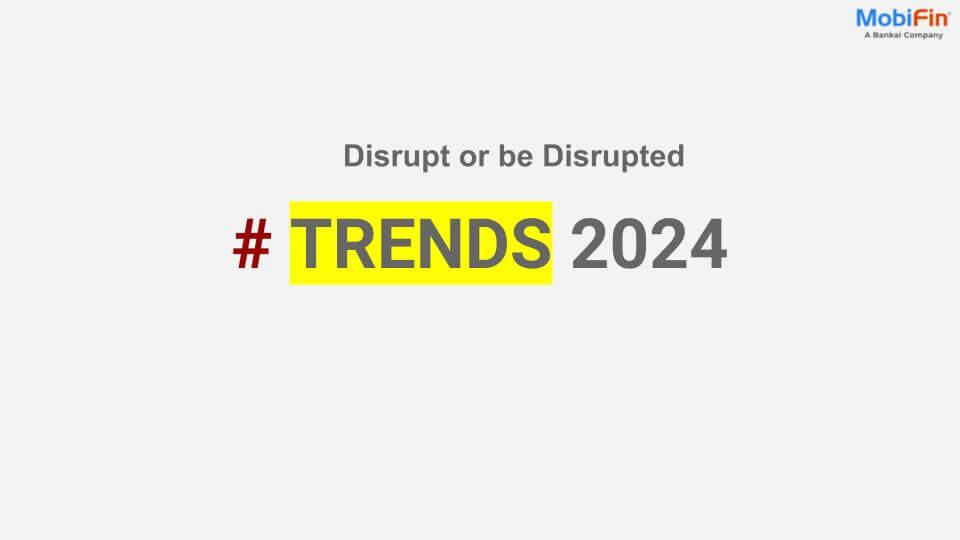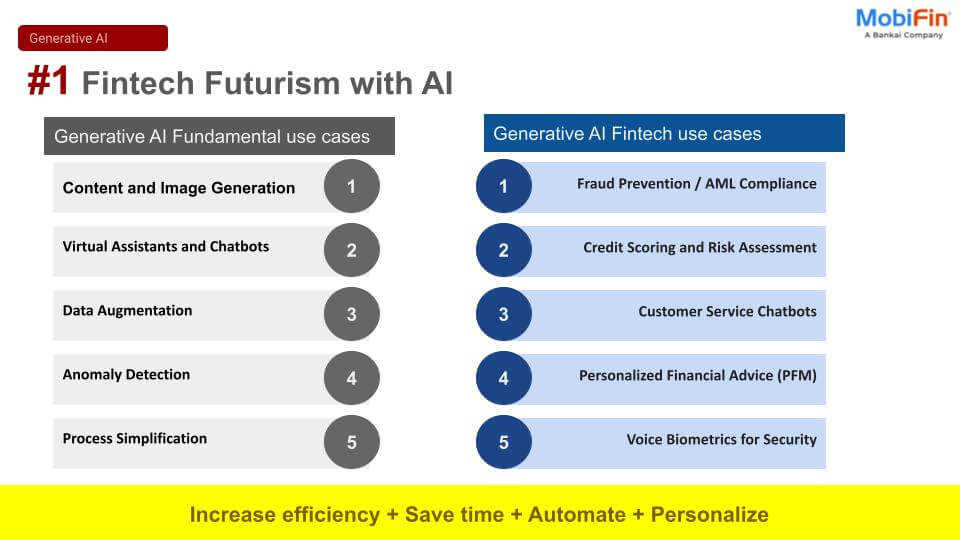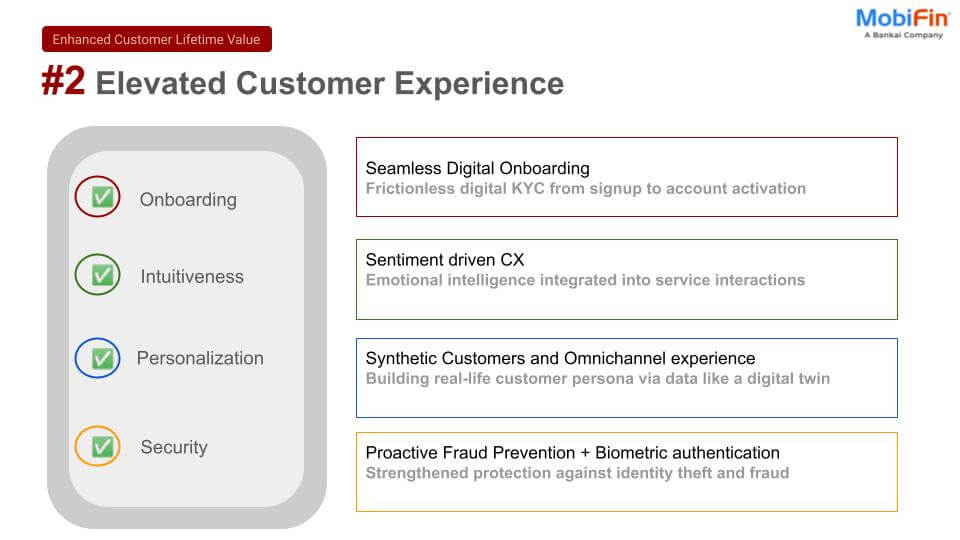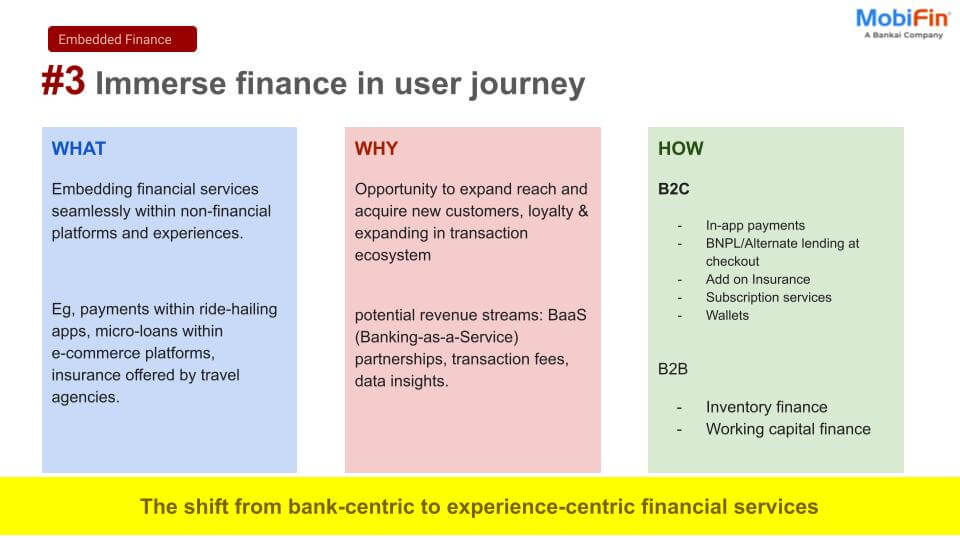The future of financial services is composable
The financial services industry is undergoing a profound transformation. As consumers increasingly expect financial services to be seamlessly embedded within their everyday digital journeys, (whether through apps, platforms, or marketplaces) every business that owns a digital customer relationship now wants to offer financial products.
This shift is triggering a race to innovate. However, many institutions remain shackled by legacy systems, bespoke development cycles, and engineering bottlenecks. This is where composable fintech emerges as a game-changer, offering unmatched flexibility, agility, and reusability.
By decoupling financial capabilities into modular components, composability enables businesses to rapidly embed and scale financial services that align with modern customer expectations.
Composable fintech: A paradigm shift
Composable fintech represents a new way of thinking about how financial capabilities are assembled and offered. It breaks down monolithic systems into modular, reusable components that can be configured and recombined to deliver financial services quickly, flexibly, and at scale.
Imagine being able to assemble a new financial product such as a digital wallet with cashback logic, KYC flows, and tiered user roles, not by writing code line by line, but by orchestrating ready-made, pre-validated building blocks. This is the essence of composability.
Why it matters now
The push for composability is being driven by four converging trends:
1. Embedded finance is accelerating
Businesses across sectors are embedding financial services into their core journeys. From ride-hailing apps offering wallets to retailers launching BNPL schemes, the demand for customizable fintech infrastructure is soaring.
2. APIs are eating the world
APIs are now seen as critical economic infrastructure. According to industry research, the projected economic impact of APIs is set to exceed $14 trillion globally by 2027.
3. Time-to-market is a competitive frontier
Waiting months to launch a new financial product is no longer acceptable. Decision-makers need tools that empower their teams to deliver quickly and iterate safely.
4. Engineering capacity is limited
Fintech innovation is too important to be constrained by overburdened tech teams.Business users and product leaders need autonomy to prototype, launch, and manage workflows without writing code.
Composable fintech in practice
At its core, composable fintech is about abstraction and reuse:
- Abstraction of complex financial logic into configurable modules.
- Reuse of templates, flows, and APIs across use cases, customer segments, and geographies.
A composable engine allows banks and payment providers to:
- Launch digital products in days instead of months
- Adapt business logic to market needs without reengineering
- Scale across tenants, channels, and devices with minimal overhead
Reimagining the fintech stack
The traditional fintech stack has served its purpose. But it’s also rigid, slow to evolve, and expensive to scale. Composable platforms offer an alternative: a headless, API-first, low-code environment where financial services are built like digital Lego.
This is not about low-code vs high-code. It’s about enabling product velocity without sacrificing robustness or compliance. In a composable system, each module, be it KYC, authentication, interest calculation, or commission rules, is an independent service with defined interfaces, versioning, and testability.
Industry implications
For banks, it means getting the best-of-breed solutions. They can compose any product based on their business needs, customer segment, existing stack, regional and regulatory nuances. Banks can consume fit-for-purpose components and build the required products.
For payment providers, it means rolling out partner-centric features such as merchant wallets, loyalty engines, and franchisee dashboards with full visibility and reusability. Each feature can be composed using modular APIs and configurable templates, allowing rapid customization for different partner needs.
For regulators, composability enables component-level risk visibility, faster compliance adoption, and standardized governance. Modular design supports granular monitoring, built-in audit trails, and easier adaptation to regulatory changes.
For developers, it minimizes redundant effort and enables focus on innovation rather than infrastructure. By leveraging pre-built, interoperable components with defined interfaces, developers can avoid rebuilding core functionalities like KYC, payments, or notifications.
A real-world perspective
Let’s take a simple use case: launching a digital wallet for a ride-hailing app. In a traditional model, this could take months of backend coding, testing, and integration.
With a composable fintech platform:
- Pre-built templates for wallets, user roles, pricing, and rules can be adapted quickly.
- APIs and blocks for KYC, fund loading, transaction history, and notifications come integrated.
- Business users can visually design workflows and test them in a sandbox before go-live.
The result? A launch cycle measured in days, not months.
The strategic edge
Composable fintech is more than an operational efficiency play. It’s a strategic lever. It lets institutions:
- Experiment faster: Validate new products, features, and pricing models without disrupting existing systems.
- Extend easily: Localize workflows, customize for partners, and iterate without fragmentation.
- Scale smarter: Standardize what works and replicate across regions, verticals, and channels.
From rigid to agile
The promise of composability is agility without compromise. Instead of stitching together rigid vendor stacks or reinventing the wheel for every product, institutions can build a shared foundation of financial capabilities and compose their future.
Final thought: Composability is inevitable
Much like cloud-native and mobile-first were once trends and are now standard, composable fintech is following the same arc. It’s not a matter of if, but when and how well institutions embrace this change.
MobiFin Tapestry is fintech’s first AI-led product composer that was built for this moment. As the financial services industry pivots toward composability, platforms like Tapestry are setting the new standard for agility and scalability.
And the future starts now.
Ready to lead the shift? Connect with us to discover how Tapestry can help your organization build faster, innovate smarter, and stay ahead of the competition.













